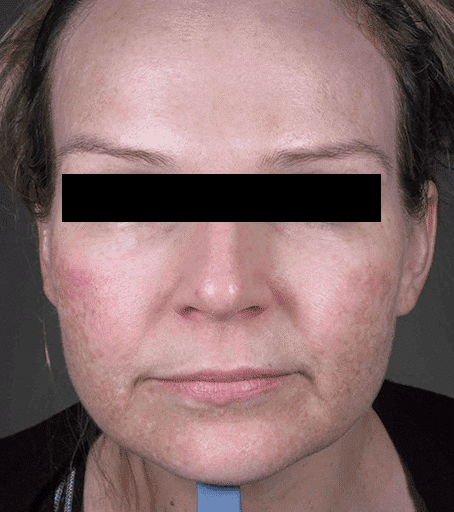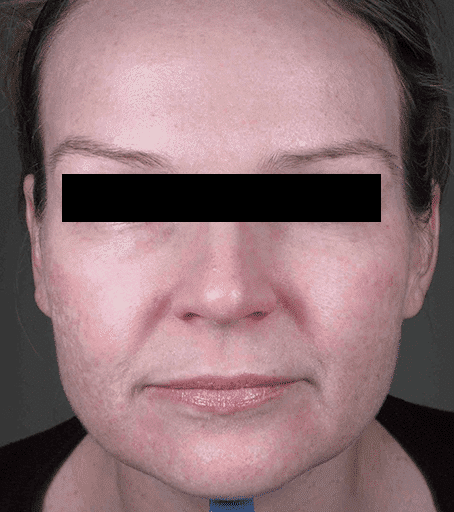
- CO2 lasers are considered the gold standard in scar revision- They are effective in treating a wide range of scars, from superficial to medium depth
- Fully ablative CO2 can be used for scars that lie at the same depth.
- Recovery time can be tailored to the individual's needs and schedule.










Superficial to medium depth scars, such as boxcar scars, shallow pick and ice pick scars, superficial rolling scars, and hypertrophic scars, are effectively treated by CO2 laser resurfacing.In addition to treating scars, CO2 laser resurfacing can also improve the overall appearance of the skin by reducing pore size, evening out pigmentation, and enhancing the skin's radiance and light reflex.

CO2 lasers are considered the gold standard in scar revision, with more evidence supporting their effectiveness compared to non-ablative lasers, microneedling, and radiofrequency treatments. CO2 lasers can be delivered using a full beam, covering the entire surface of the skin or fractional laser resurfacing, which only covers a portion of the skin, typically between 5 to 60%. Fractional resurfacing provides great outcomes with minimal downtime, risks, and costs. The laser works by stimulating collagen production and breaking down scar tissue. Compared to "cold" devices such as microneedling, CO2 lasers are more effective for scar revision because they generate HSP, which is essential for collagen production.

To begin the scar revision process, schedule a consultation with one of our laser dermatologists who will evaluate your scars and guide you through the options available.

CO2 lasers are effective in treating scars for fair to medium skin tones. However, it's important to note that the settings used can affect the outcome. For patients with darker skin tones, special lasers are used to minimize the risk of post-treatment darkness. Our dermatologists will match your skin tone to the appropriate laser to ensure optimal results and minimise side effects.

The level of pain relief provided is adjusted based on the depth and extent of the laser treatment. For superficial laser resurfacing, topical anesthetic cream is typically the only pain relief required. For medium to deep laser resurfacing, a combination of anesthetic cream, nerve blocks and tumescent anaesthesia may be used to manage any discomfort.

The number of sessions required for the treatment of your scars can range from one to four, and is influenced by factors such as:
1. Skin type - with darker skin typically requiring more sessions.
2. The depth of your scars is another important factor - with deeper scars often requiring a greater number of treatments.
3. Downtime - If you are looking to minimize downtime, it may be necessary to schedule more treatment sessions.
4. Your expectations for the outcome of the treatment will also impact the number of sessions required. Our priority is to achieve optimal results while minimizing the number of sessions required, while also taking into consideration your skin color and recovery time. Your dermatologist will provide you with a more precise estimate of the required sessions prior to commencing the treatment.

While CO2 lasers are known to produce impressive results, they also typically involve a longer recovery time. As a general guide: Superficial or level 1-2 resurfacing: 2-4 day recovery, with redness lasting for 4-6 days.Medium or level 2-4 resurfacing: 3-5 day recovery, with redness lasting for one to two weeks.Deep or level 4-5 resurfacing: 6-8 day recovery, with redness lasting for 1-3 months.Our team will provide you with an accurate estimate of the expected recovery time based on the level of resurfacing required. For deeper resurfacing, the recovery time can be shortened with the use of LED, vascular lasers, and pico lasers.

Initial improvements can be observed as early as one week following the resurfacing procedure, with maximal benefits typically seen at 4-6 months. This is the duration required for collagen remodelling. With a series of treatments, the results will continue to improve and compound over a period of 6-12 months. However, it's important to note that to ensure the best possible outcome, it is necessary to have acne under control before undergoing the treatment. Active acne can lead to inflammation, which can slow down collagen production and compromise the results.

In addition to CO2 lasers, our team of dermatologists and specialist laser nurses offer a range of other scar revision techniques, which are tailored to the specific scar type. These treatments include: Deep focal peels: TCA Cross, also known as CROSS or paint. Fractional lasers: FraxelSubcision: Nokor, blunt cannula. Surgical: Punch elevation, excision. Our team will work with you to determine the best possible treatment approach for your specific condition and needs.

Sun exposure can exacerbate the appearance of redness and pigmentation, and also prolong the recovery process from the laser treatment. To ensure optimal protection, it is recommended to use a high-quality, stand-alone sunscreen that is cosmetically elegant. The sunscreen should be applied as follows: In the morning: Apply 2-3 ml to the face and neck.At noon: Re-apply 2-3 ml of the sunscreen.

Before undergoing laser treatments for acne scarring, there are some important factors to consider to ensure the best possible outcomes. 1. Acne control is essential for optimal results. Prior to any scar revision treatment, it's important to achieve absolute or nearly absolute control of acne. If in doubt, a dermatologist consult is essential.2. Sun protection is crucial. While it's still possible to enjoy the outdoors, it's important to use a high-quality sunscreen with an SPF of 50+ applied twice daily, regardless of exposure. If a 50 ml bottle of sunscreen lasts longer than three weeks, it may not be sufficient.3. Those with darker skin may require more treatment sessions than individuals with lighter skin. In some cases, skin darkening may be expected, but our team at Scars and Lasers can offer solutions to lighten the skin back to normal.4. Laser settings matter. While lasers are effective tools for the job, optimal outcomes depend on choosing the right laser and most importantly, appropriate parameters.
For all appointment enquiries, medical referrals and urgent enquiries please contact us at info@scarsandlasers.co.nz or (09) 524 5011.
